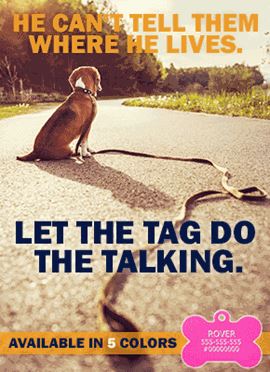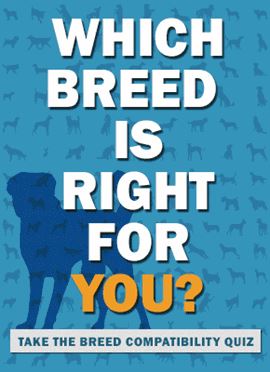
Is Your Dog Overweight, Underweight, or Just Right?
October 13, 2016 CKC Staff Writer Health & Nutrition
As our pets become more sophisticated and mature, their energy levels drop a bit, and along with that change goes their required calorie and fat intake.
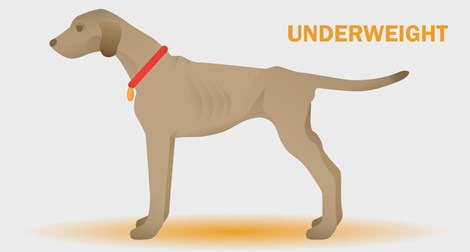 Underweight dogs carry a minimal amount of fat and muscle tone, leaving bones easily felt and seen under the skin in the form of bony prominences. The tummy (underline) is significantly tucked upward toward the groin, giving the waist a hollow appearance. When viewed from the side, the dog may have a wasp-like appearance, along with an hourglass appearance when viewed from above.
Underweight dogs carry a minimal amount of fat and muscle tone, leaving bones easily felt and seen under the skin in the form of bony prominences. The tummy (underline) is significantly tucked upward toward the groin, giving the waist a hollow appearance. When viewed from the side, the dog may have a wasp-like appearance, along with an hourglass appearance when viewed from above.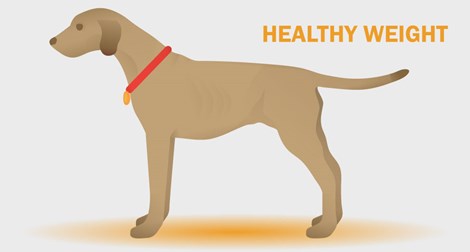 Ideal weight is when a dog’s ribs and other bony prominences (such as hips) are easily felt under the skin, muscle, and fat, but the outlines of the ribs are not visible. The tummy (underline) tucks upward toward the groin when viewed from the side, and the dog has a visible waist when viewed from above. This is a good indication that the dog’s body is utilizing nutrients efficiently, and the dog is getting a proper amount of exercise.
Ideal weight is when a dog’s ribs and other bony prominences (such as hips) are easily felt under the skin, muscle, and fat, but the outlines of the ribs are not visible. The tummy (underline) tucks upward toward the groin when viewed from the side, and the dog has a visible waist when viewed from above. This is a good indication that the dog’s body is utilizing nutrients efficiently, and the dog is getting a proper amount of exercise.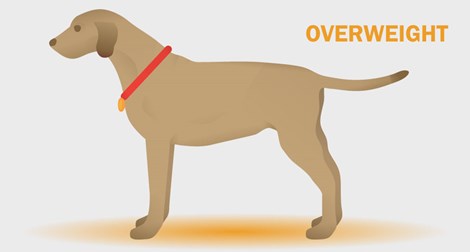 Overweight dogs have a copious amount of fat distributed over their muscles, surrounding their internal organs. Their ribs are not easily felt under the fat and muscle, and there is no tuck-up on the underline toward the groin. The abdomen may give a pot-bellied or rounded appearance. There is no waist, and the dog’s back may appear broadened when viewed from above.
Overweight dogs have a copious amount of fat distributed over their muscles, surrounding their internal organs. Their ribs are not easily felt under the fat and muscle, and there is no tuck-up on the underline toward the groin. The abdomen may give a pot-bellied or rounded appearance. There is no waist, and the dog’s back may appear broadened when viewed from above. 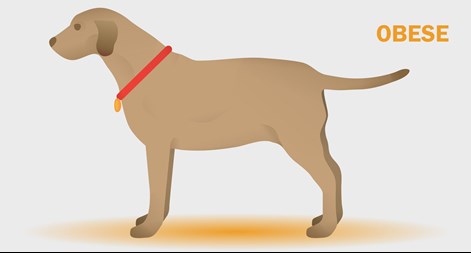 Obese dogs have ribs and other bony prominences that are difficult to feel due to a thick covering of fat distributed throughout the entire body. The tummy may bulge and hang downward below the chest. The back is wide when viewed from above. There may be fat deposits located throughout the body.
Obese dogs have ribs and other bony prominences that are difficult to feel due to a thick covering of fat distributed throughout the entire body. The tummy may bulge and hang downward below the chest. The back is wide when viewed from above. There may be fat deposits located throughout the body.Nutrition
The nutritional needs of our canine companions are similar to our own, and like us, the needs of our dogs will change as they get older. As our pets become more sophisticated and mature, their energy levels drop a bit, and along with that drop comes a decrease in their required calorie and fat intake. To ensure that your pet retains a healthy figure throughout all stages of life, gradually decrease the amount of fat and calories in the diet accordingly.
As we all age (dogs included), our ability to efficiently digest and process nutrients drops. For this reason, we need to ensure that our pets are given the most nutritious food possible. Senior pets will often require supplements of vitamins and minerals that are easily digested with their meals.
Daily Caloric Needs for Average Indoor Pets
10-lb Dog - 300 calories
20-lb Dog - 500 calories
50-lb Dog - 1,200 calories
Tags: veterinary









